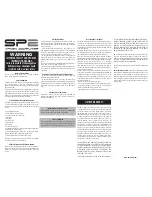
10
www.h2flow.net
5.3 Grounding
In this section, the term “grounding” will be defined as: the arrangement of process wetted metal materials (piping, ground
rings, ground electrodes), cabling (ground straps, ground wires), and connections to stable references (often, but not always
earth ground) required to achieve satisfactory operation of a magnetic flow meter. As such, it applies to the instrumentation
aspect of grounding, rather than to “safety grounding”.
Proper installation and grounding of the magnetic flow meter is important for accurate and reliable measurement
performance. Stray AC or DC currents through the fluid or instrument can produce noise signals that may in turn interfere with
the relatively low flow signals generated in today’s modern pulsed DC mag meter.
H2flow Controls provides a variety of elements (ground straps, ground electrodes, ground rings) and directions for the
standard grounding of the mag meter.
Applications exist in which the user cannot or should not make use of the traditional grounding connection to adjacent
piping and to earth ground. These flow measurement applications are frequently encountered in electrolytic processes.
In this case, the fluid passing through the mag meter flow tube may potentially be at significantly higher or lower than
earth ground, and a connection to earth ground may be detrimental to the performance and even the reliability of the
mag meter. These applications are typically compounded by the use of non-conductive or lined pipe and may feature
acid or caustic flows which may necessitate the use of expensive wetted electrodes and grounding materials such as
titanium, platinum, or tantalum.
5.4 Connections
Use a gasket between the meter flange and mating flange. Determine the material of the gasket based on the
operating conditions and type of fluid.
Note:
Do not over tighten the flange bolts. This may cause the gasket to be compressed into the flow stream and may
decrease the accuracy of the meter.
Installation Dimensions: Refer to the following Figures and Tables.
Fig. 5.5 Drawings for Integrated Electromagnetic Flow Meter











































